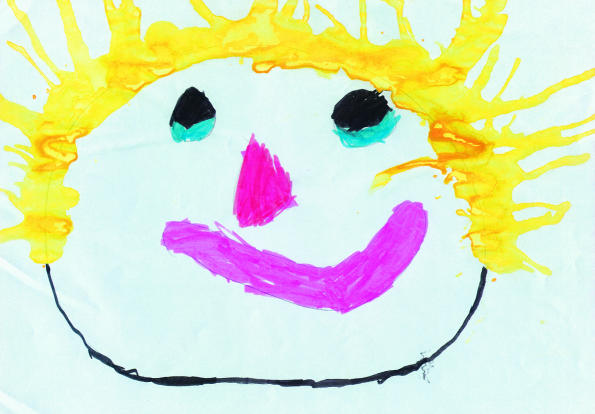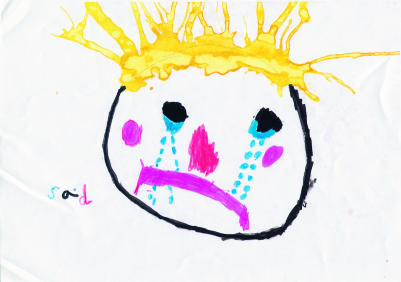Earlier this year a 15 year old girl had her decision to refuse a heart transplant overruled by the High Court,1 highlighting the issue of partnership with children. The case is the latest of several2 that have shown how children’s participation in decision making and recognising their autonomy and rationality3,4 can conflict with the need to protect them from making decisions that are not in their long term interests.5
Court cases dramatically show the problems of involving children in decision making, but they tend to deal with extreme and unusual examples and have led to uncertainty and anxiety about routinely involving children in decision making. Away from the courts a movement is growing to promote children’s rights. Proponents have argued from a position of moral obligation and have called for a code of practice which would emphasise children’s rights to information, to express views, and to give or withhold consent provided the child is considered competent by a doctor.6 Professional bodies and others concerned with children’s wellbeing seem to have accepted many of these principles,7–10 which are based on ethical and moral principles of autonomy, free will, choice, and compassion and have the laudable aim of allowing children’s opinions to be voiced, heard, and acted on wherever possible.
However, the evidence suggests that partnership with children enjoys only limited success. Children are given little voice in medical consultations8,11 and are rarely consulted as partners in the evaluation and planning of health services.12,13 The aspirations of the children’s rights movement will have little chance of being realised until there is more research based evidence about the outcomes of shared decision making, how the competence of children can be assessed, how information can be shared with children, and how shared decision making should be managed in practice.
Summary points
Child partnerships have been debated largely in the context of discussions about children’s rights or high profile court decisions
Many obstacles to forging partnerships with children could be overcome with better evidence from research
Parents, health professionals, and others need good quality evidence to reassure them that partnership with children will not produce adverse effects in the long term and to guide them about how to manage partnership
Evaluation of outcomes of childhood interventions needs encouragement from government bodies together with promotion of quality in information for children
Outcomes
An important source of resistance to extending the ideals of patient partnership to children is lack of good evidence about the outcomes. Clinicians, parents, and others need to be reassured about the effect on children’s wellbeing and about issues such as how families, perhaps with the benefit of hindsight, assign responsibility for “wrong” decisions. In assessing the outcomes of partnership, it is vital to include children’s perspectives and to be sensitive to how these may change as children develop. Recent developments in methods for assessing child based outcomes have been encouraging. For example, measures of quality of life in children have begun to move away from using parents as proxies and treating children of all ages as having the same concerns. Instead they ask children directly for their views and are developmentally sensitive.14 The recent use of qualitative approaches is also hopeful.15 Use of these developments for longitudinal assessment of outcomes of different forms of shared decision making should be a research priority.
Competence
A key anxiety in creating partnerships with children is uncertainty about children’s competence and how it can be assessed in different ages and abilities. Despite the suggestion that children should be assumed to be competent unless demonstrably incompetent,6 it is easy to assume that children are competent only if they make the decisions doctors want them to make. The children’s rights movement might see this as paternalism, but it also reflects the fact that our knowledge of children’s ability to understand and act on medical information is incomplete. Better understanding of children’s conceptualisation of health and illness would help to resolve some of the legal and ethical debates about whether children of different ages and intellectual abilities can give informed consent.
Traditionally, however, research into children’s ideas about health and illness has been dominated by an overly rigid Piagetian perspective.16Recent work using methods such as “draw and write” has broadened its focus and begun to demonstrate children’s conceptualisations more aptly.17 These methods need to be used more extensively to study ill children, whose experiences may facilitate the development of competencies beyond their chronological age. More appropriate methods also need to be developed for investigating older children and adolescents, perhaps using in depth interviews. Another priority is better methods for assessing the competence of children of different intellectual abilities, including those who have learning disabilities. These methods should be useful in clinical settings as well as research projects.
Providing information
Children’s ability to participate competently in decision making and give informed consent might be improved by well designed information materials. Although excellent examples do exist, many materials are directed at parents or do not take account of the different needs of different ages. The development of new materials to support evidence based choice by children is hampered by fundamental problems with the quality of the evidence about many common paediatric interventions.7 There is also a scarcity of evidence about how to design information materials for children. How far methods for evaluating adult materials, such as the DISCERN instrument,18 apply to children of different ages and intellectual abilities needs to be determined. The newly established National Institute for Clinical Excellence and the Centre for Health Information Quality could have a role in this.
Managing the consultation
A further barrier to creating partnerships with children is uncertainty about how to manage shared decision making in the context of a complex relationship involving not only the doctor and child but also parents, other family members, and a range of healthcare professionals. The process of decision making may raise many sources of potential conflict. Shifting coalitions and complex forms of role switching may occur, professional-child alliances might undermine the parent-child relationship, and there is a risk that shared decision making could be mistakenly seen as sanctioning the delegation of responsibility to children. Moreover, children of different ages require very different forms of partnership and different kinds of support for those partnerships.
Examples of shared decision making in child health can be found, but the rules that govern them need to be explicit and formalised, perhaps through empirical observation and analysis by social scientists. These rules need to be complemented by more sophisticated theory on issues around responsibility for decision making in situations involving children. In particular ideas around the role of “agency,” in which children, parents, and professionals might all delegate responsibility to an informed agent, need to be developed. Models for including children in decision making need to move away from individually based models towards collective models and to recognise that situations involving children require a family oriented perspective.
Conclusion
Patient partnership may benefit children and should ideally include participation in the planning and evaluation of health services and in planning research agendas as well as participation in decision making. However, children have special needs and we owe a duty of protection to them. Systems need to be put in place to support partnership, including information materials. Perhaps more urgently, research is needed to show the effect of involving children in decisions and to indicate how partnership can be managed in practice.
Figure.
Children’s views should be included in assessing outcomes of health care. These paintings by a child with cancer show how effectively children can express their feelings
Acknowledgments
We thank Professor Mike Silverman for comments on earlier drafts of this paper.
References
- 1.Dyer C. English teenager given heart transplant against her will. BMJ. 1999;319:209. doi: 10.1136/bmj.319.7204.209. [DOI] [PMC free article] [PubMed] [Google Scholar]
- 2.Lansdown R. Listening to children: have we gone too far (or not far enough)? J R Soc Med. 1998;91:457–461. doi: 10.1177/014107689809100902. [DOI] [PMC free article] [PubMed] [Google Scholar]
- 3.Hart C, Chesson R. Children as consumers. BMJ. 1988;316:1600–1603. doi: 10.1136/bmj.316.7144.1600. [DOI] [PMC free article] [PubMed] [Google Scholar]
- 4.Rylance G. Making decisions with children. BMJ. 1996;312:794. doi: 10.1136/bmj.312.7034.794. [DOI] [PMC free article] [PubMed] [Google Scholar]
- 5.Ross LF. Health care decision-making by children. Is it in their best interest? Hastings Cent Rep. 1997;27:41–45. [PubMed] [Google Scholar]
- 6.Alderson P, Montgomery J. Health care choices: making decisions with children. London: Institute for Public Policy Research; 1996. [Google Scholar]
- 7.United Nations. Convention on the rights of the child. Geneva: United Nations; 1989. [Google Scholar]
- 8.House of Commons Health Committee. The specific needs of children and young people. Vol. 1. London: Stationery Office; 1997. [Google Scholar]
- 9.American Academy of Pediatrics; Committee on Bioethics. Informed consent, parental permission, and assent in pediatric practice. Pediatrics. 1995;95:314–317. [PubMed] [Google Scholar]
- 10.Royal College of Paediatrics and Child Health. A children’s health service. London: RCPCH; 1998. [Google Scholar]
- 11.Silverman D. Communication and medical practice: social relations in the clinic. London: Sage; 1987. [Google Scholar]
- 12.Mayall B. The changing context of childhood: children’s perspectives on health care resources including services. In: Botting B, editor. The health of our children. OPCS dicennial supplement. London: HMSO; 1995. [Google Scholar]
- 13.House of Commons Health Committee. Hospital services for children and young people. London: Stationery Office; 1997. [Google Scholar]
- 14.Juniper EF, Guyatt GH, Feeny DH, Ferrie PJ, Griffith LE, Townsend M. Measuring quality of life in children with asthma. Qual Life Res. 1996;5:35–46. doi: 10.1007/BF00435967. [DOI] [PubMed] [Google Scholar]
- 15.Shucksmith J, Hendry LB. Health issues and adolescents: growing up, speaking out. London: Routledge; 1998. [Google Scholar]
- 16.Brewster AB. Chronically ill hospitalized children’s concepts of their illness. Pediatrics. 1982;69:355–362. [PubMed] [Google Scholar]
- 17.Oakley A, Bendelow G, Barnes J, Buchanan M, Husain OAN. Health and cancer prevention: knowledge and beliefs of children and young people. BMJ. 1995;310:1029–1033. doi: 10.1136/bmj.310.6986.1029. [DOI] [PMC free article] [PubMed] [Google Scholar]
- 18.www.discern.org.uk




